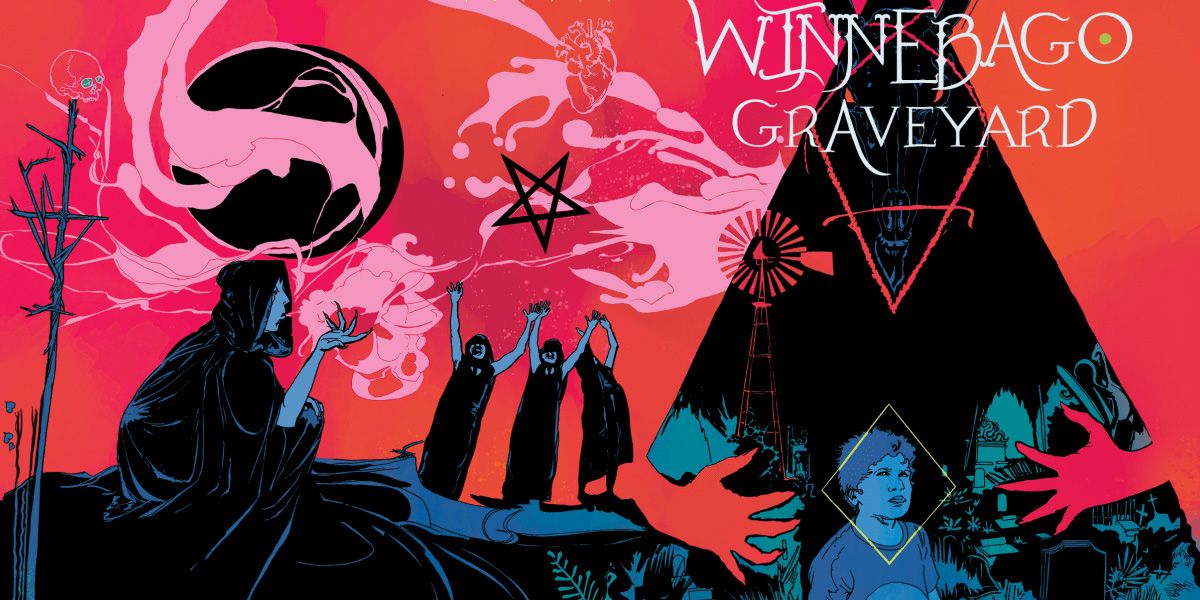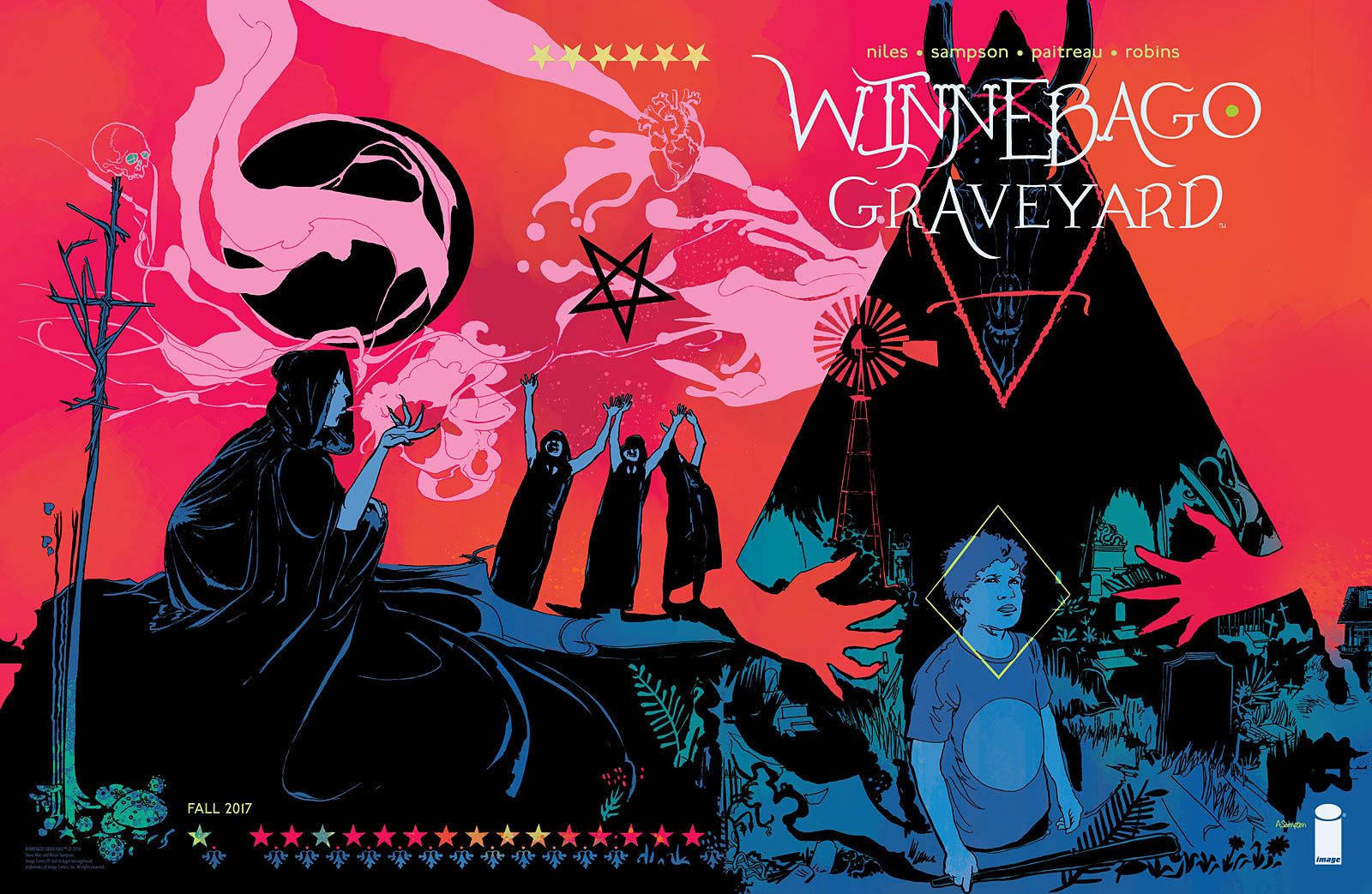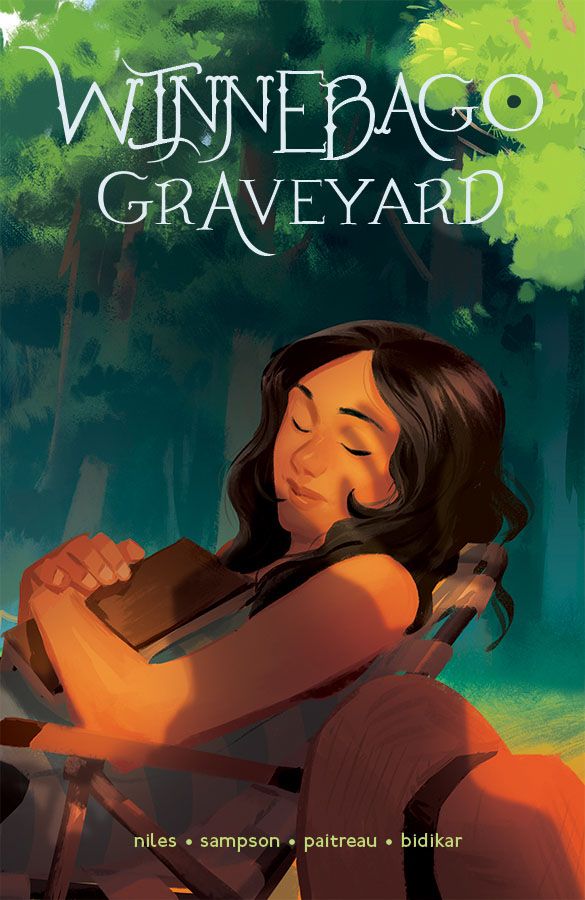You don't see very many dragons on today's maps.
We've charted every square inch of this vast continent, from sea to shining sea. It's been wound together in a mesh of measured highways. We can manifest our destinies through satellite networks, navigate by phone or GPS.
And yet, as Steve Niles (30 Days of Night) and Alison Sampson (Genesis) caution in their new four-issue Image Comics series Winnebago Graveyard, about a family pursued by cultists while on vacation, the American wilderness still bucks under anxious travelers. A family can choose to surrender themselves to mystery and wonder, take that unmarked exit off the interstate, roll onto gravel, and leave the known world behind.
They will find that the unmapped frontier is rarely kind.
CBR: According to Steve's afterword, Winnebago Graveyard has its roots in a particular era in horror cinema. Was that a mutual touchstone, or is this a question of two collaborators blending their nightmares together? Do you share the same fears, the same interests in horror?
Alison Sampson: To some extent. I was brought up on 1970s and 1980s hard sci-fi and pulp horror novels -- it's what you get when your reading matter comes from a mobile library -- as opposed to films. That said,I've watched quite a few 1970s films, and we started the project with a rewatch of some of Steve's favorites.
We probably diverge a bit -- when you are making the art there's a need for different touchstones, so I was thinking about "how I feel," and going back to things I'd seen which made me feel that way, so, say, Goya is as relevant as Warren Oates. I'm also one for looking in the real world for horror -- you don't need a film to find it, and in any case, when you actually have to draw truly gross stuff, you have to dig a bit deeper than second-hand. I think to some extent the answer to your question is "yes" and "yes."
I'm really struck by Mingjue Helen Chen's variant cover for issue #1. It's tranquil! Was that your direction on it? It's a very inspired choice.
Sampson: Thank you. We love it too. I wanted something which would compliment my own "Pyramid of Death" cover, and I wanted something with Chrissie on holiday on it, a kind of "calm before the storm" image that would then be a foil for what was to come. Helen and I chatted on the phone, which I appreciated -- she has experience of conjuring up space and a conversation around the subject really helped. Coincidentally, round that time Helen was doing the Gotham Academy/Lumberjanes crossover covers and I thought there was some connection between that and what we wanted. She came up with some sketches and I picked one -- probably the simplest. It isn't quite misdirection, but I'd see it more as a prologue to the story -- and here we are.
Steve, you mentioned that upon first seeing Alison's work elsewhere, you knew she'd be a great match for a horror story. No disagreement here, but can you speak to what you saw back then, on what you look for in great horror?
Steve Niles: I remember seeing her art online and was immediately struck by it. Incredible detail, facial expressions, attention to line and background. There’s something so organic to it, old-school true drawing that happens to work great in comics. I’m not sure if I can really describe what makes great horror in art, it can be so different. It depends on the story, characters, place and then the artist sets the mood. Alison’s attention to line and detail reveals the horror of the human monsters in this book, the strangeness of the desert town, the terror and fear. And then the color work by Stéphane Paitreau just kicks it in amazingly.
Alison, how do you go about visualizing the atmosphere of a satanic blood ritual? Or even a carnival like the one we see in this first issue? Are you looking at historical record, or is it more fantasy than reality?
Sampson: It is my idea of what I'd like it to be like. I'm categorically not looking at historical record -- I just don't think that would help me. So the art for the carnival and the rest of the book is me putting together an almost graphic idea of what I think that world would be like, with stripes and diamante, light bulbs and painted plywood, exposed wiring and weathered paint. It is made out of my memories of my idea of music hall and American miners' houses, the old painted wood, exposed bulbs and wooden roller-coaster of a funfair I might or might not have been to 40 years ago.
With satanic ritual there is so much unpicking one has to do, to separate the pastiche from any semblance of what might have happened, that you just have to make it up (also, a ritual is a ritual is a ritual). Using the script as a guide, I start in the middle of the page and work outward.
The horror of this story seems rooted in the fear of getting lost, in that notion that there's still a great deal of wilderness out there. Is that an anxiety for either of you?
Sampson: We can get lost on any day at any time in any place, and sometimes it is nice to be lost -- it is one of the big reasons we travel at all. My professional work in architecture demands we attack many situations as a dilettante and travel alone. and eventually you get used to dealing with whatever you find. It never gets any easier, though. So I've never lost sleep over getting lost. When you have stuff to do, you need your sleep.
Niles: Just watching the news causes a ton of anxiety about traveling. I've always hated traveling. Mainly I prefer to be at home so I can really feel for the characters in WG. You always hear about some horrible thing happening to someone on the road and wonder what you’d do in that situation. I think we can all relate to this story because of that.
Winnebago Graveyard #1 is available this Wednesday, June 14.



